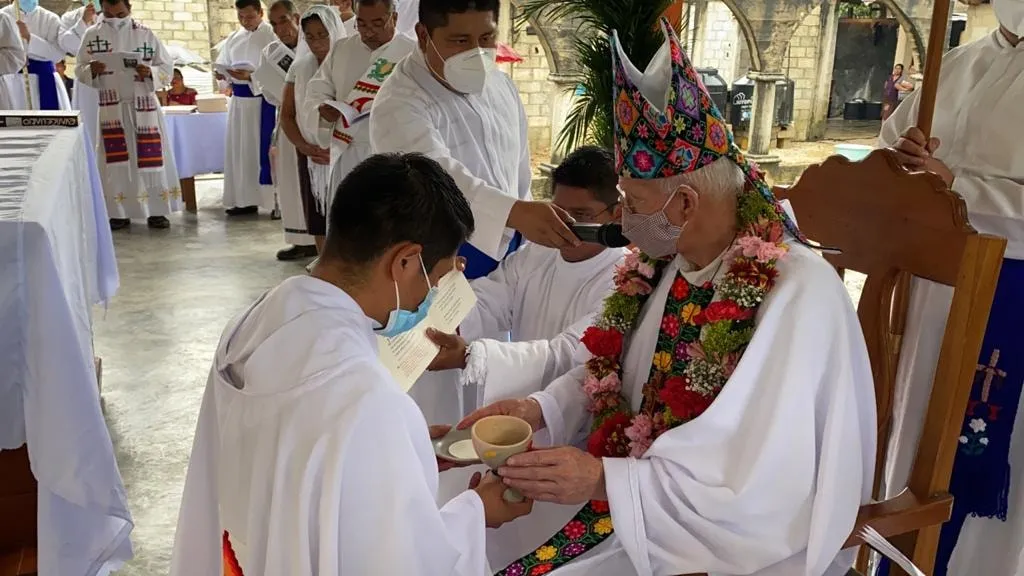The Mexican bishops' conference has submitted, for Vatican approval, "a series of Indigenous liturgical adaptations for the celebration of Holy Mass for the 'original peoples' of the country." The Vatican has reportedly received the adaptations 'favorably.' They include a layperson who will incense the altar in place of the priest; a "senior layperson" who will "lead community prayer," and ritual dancing.
Here is what then-Cardinal Ratzinger said about liturgical dancing in his classic The Spirit of the Liturgy:
Dancing is not a form of expression for the Christian liturgy. In about the third century, there was an attempt in certain Gnostic-Docetic circles to introduce it into the liturgy. For these people, the Crucifixion was only an appearance. Before the Passion, Christ had abandoned the body that in any case he had never really assumed. Dancing could take the place of the liturgy of the Cross, because, after all, the Cross was only an appearance. The cultic dances of the different religions have different purposes — incantation, imitative magic, mystical ecstasy — none of which is compatible with the essential purpose of the liturgy of the 'reasonable sacrifice.'
It is totally absurd to try to make the liturgy 'attractive' by introducing dancing pantomimes (wherever possible performed by professional dance troupes), which frequently (and rightly, from the professionals’ point of view) end with applause. Wherever applause breaks out in the liturgy because of some human achievement, it is a sure sign that the essence of liturgy has totally disappeared and been replaced by a kind of religious entertainment. Such attractiveness fades quickly—it cannot compete in the market of leisure pursuits, incorporating as it increasingly does various forms of religious titillation. I myself have experienced the replacing of the penitential rite by a dance performance, which, needless to say, received a round of applause. Could there be anything farther removed from true penitence?
Liturgy can only attract people when it looks, not at itself, but at God, when it allows him to enter and act. Then something truly unique happens, beyond competition, and people have a sense that more has taken place than a recreational activity. None of the Christian rites includes dancing.
It is of course ironic that the Vatican would, in certain regions, allow ritual dance to be introduced into the liturgy that it deems the "unique expression" of the Roman Rite, while at the same time attempting to totally eliminate the Traditional Latin Mass. This fact refutes the notion that Rome seeks a single expression of the Roman Rite. Instead, it seeks to make the Roman Rite incoherent, stripping it of its sacrificial elements and Christo-centric elements and making it redolent of the surrounding culture.
